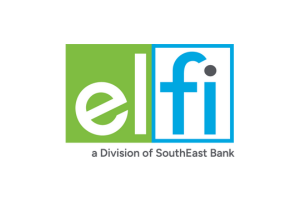Raise your hand if you’re an orthodontist and most people assume that you’re rich. Never mind that new doctors often graduate with more than $500,000 in student loan debt. Some even owe more than $1 million in orthodontist student loans. The cost of becoming an orthodontist has never been higher.
The average student loan debt for orthodontists that have hired us to get a plan has been $617,273. We’ve even had a few that owed close to or above $1 million. This guide for the heavily indebted orthodontist will show you a path forward to free your mind and spirit from the burden of debt.
The right plan for orthodontists
Even with more student loans than most people’s retirement savings, you can have an abundant and secure financial future. You have to think differently from the typical advice you hear on the radio, podcasts, or in the media.
These folks don’t understand your unique challenges. We advise more orthodontists that anyone else in the country on student loan debt specifically. The “put it on a 30-year plan and forget it” approach died long ago. Most orthodontists make mistakes with their student debt that are somewhere between the cost of a new Audi and a couple years of salary. After reading this article, hopefully, you won’t be one of them.
Orthodontists get hammered with dental school debt
To become an orthodontist, you must first go through dental school and rack up four years of student debt for your DMD or DDS. Many of the clients we’ve made student loan plans for took out $300,000 to $500,000 for dental school before they went through the two to three-year orthodontics residency program.
I’m not sure if there’s a correlation behind people who go to high-cost private schools who then want to go on and become orthodontists or not. My guess is that the prospect of being a general dentist might be very appealing financially if you owe $160,000 coming out of a Texas university. A few years of paying down debt, and you’re debt free making more than three times the median household income.
However, if you’re looking down the barrel of an NYU sized student loan debt, then maybe you think “what’s another couple hundred grand? That way I will stand out from my general practitioner peers.”
When you owe so much going into residency, the interest accrues at an astonishing level. Then you have to borrow even more money.
Most orthodontics residency programs have a high cost
When I’m advising periodontists, endodontists, pediatric dentists, prosthodontists, and other dental specialists, they often do not need to take out massive sums to cover residency expenses.
Some training programs pay you a stipend. The doctor might need to take out some extra loans to cover the family budget or live comfortably, but you don’t get saddled with massive program and equipment fees in many cases.
Of course, some programs like to squeeze every last dollar out of your pocket, even for residencies like periodontics or pediatric dentistry. That said, orthodontics is special in the level that programs like to charge for the training. There are very limited stipend-based programs out there.
Even the ones that do provide some level of stipend usually charge steep tuition. For example, the program at NYU charged $78,854 per year for a three-year program.
USC is $91,055 for tuition in years 2 and 3.
One wonders if institutions like these truly care about the financial health of graduates, or if they just love the high revenue generated from the student loans they help you borrow.
What if you owed $500,000 when you graduated from dental school, and you go to USC for orthodontics training? How much would you owe when you finally start making real orthodontist money?
Cost of Being an Orthodontist | Dollar Amount |
Starting Debt | $500,000 |
Extra Debt at USC Ortho | $349,139 |
Interest Accrued in Residency | $153,879 |
Loan Fees at USC | $13,966 |
Total Debt | $1,016,984 |
Hence, for a new graduate of a private dental school in 2019 who wants to go into orthodontics, the norm will become $1 million student loan balances after 2022.
The market for orthodontists is saturated in some areas (especially in California, New York, and Utah)

Los Angeles and New York City are desirable places to live. That’s why high-income professionals like orthodontists love to cluster there. To make matters worse, high-cost orthodontics residency programs are there too. That means plenty of competition for anyone who wants to live in one of these two major American cities.
We have a fair amount of income data for orthodontists because of the variety of people we’ve advised. The average income for an associate orthodontist in a saturated area like these big cities is around $225,000.
Utah also has a saturation problem because of the disproportionate number of Mormon orthodontists who want to move their families there.
Where to get a high orthodontist salary
If you want a high orthodontist salary, you’re going to want to move to an area without a lot of competition. We’ve had several recent grads as clients who are pulling down $400,000 to $500,000 per year. All are located away from the East and West coasts.
You need to be in a high enough income area that still demands your services. That said, once you clear a hurdle of an area with good demographics and not a ton of competition, you’ll have a good chance to make a high income.
The lower risk path is to buy an existing practice. You take out a competitor in the area, the staff, systems, and customer base already exists, and the probability of success if very high. Bankers tell me it’s extremely rare to have an orthodontic practice loan default.
If you go to the coasts, not only do you have to battle competition, you also get hit with higher costs for labor, real estate, and cost of living. Your house will cost more, your taxes will be higher, and you cost of inputs to your business is more.
In a mid-sized metro area in the Midwest, you can easily own your building, get quality people for less money, and not worry as much about the perfect marketing plan.
Related: Guide to Disability Insurance for Orthodontists and Costs
Refinancing orthodontist student loan debt
There are special deals through the AAO that many of you have heard of. That said, I usually find better deals than that because I have relationships with a lot more lenders than just one.
You should only refinance if your debt to income ratio is below 1.5 to 1 and you already own your own orthodontic practice or have partnered in one.
Otherwise you could create instability in your finances for only a modest amount of savings. That’s not wise.
If you’re an obvious refinancing case, then see what other banks you haven’t heard of before might offer you in less than 10 minutes. We negotiate cash back bonuses too that sometimes get as high as $2,000.
Student Loan Planner® clients often get special deals as well, so feel free to shop around and reach out to see if we could beat whatever student loan refinancing deal you’re considering.
The problem I see with orthodontist student loan refinancing is that many docs let the tail wag the dog. Your financial future will primarily be determined by your savings rate, buying and running a successful practice, investing wisely, and not making a huge mistake with your student loans (ie refinancing when you shouldn’t)
Many orthodontists put so much emphasis on the student loan interest rate when there are many factors that I consider far more important. You’ll see why if you keep reading.
Why you should own your own orthodontic practice
You don’t need to worry about qualifying for a practice loan if you have a lot of student debt. If you hire us to make a student loan plan for you, we can tell you why in detail.
The short answer is that the banks care about your required payment, not your total student debt burden. They want to see that you know how to manage short-term cash flow and that you have at least $30,000 of savings.
To get the income you want after invested so much in your career as an orthodontist, you should own your own practice.
As an employee, there are no ways to shield your income from the IRS legally (except for retirement savings). As an owner, not only can you make a lot more money, you can make sure a lot of it doesn’t show up on your Adjusted Gross Income (AGI).
That number is what determines your student loan payments. The lower it is, the lower your payments.
Did you know you can write off a percentage of your building on your taxes each year if you own it? What about deducting a portion of the cost of equipment each year? How about deducting the cost of employer contributions to your 401k plan?
You might be able to make as much as two times the orthodontist income as a practice owner while your taxes only display 25% to 50% more income.
You can still go for a loan forgiveness strategy even while you make a bunch of money. Look at this example of an orthodontist who has $800,000 of student loan debt at 7% on the PAYE plan, 5 years of credit towards forgiveness, but she earns $400,000 per year. We’ll assume she shields $100,000 of it with write-offs as I mentioned above. I compare PAYE to a 15-year private refinancing.
Plan | Payments | Remaining Balance | Tax Bomb | Total Cost |
PAYE | $524,824 | $1,115,176 | $446,070 | $970,894 |
Refinancing at 5.5% | $1,204,846 | N/A | N/A | $1,204,846 |
She owes a $446,000 tax bomb, but the cost on PAYE is dramatically cheaper compared to the refinancing approach. In this case, she could save almost $300,000 in today’s dollars with a properly executed plan.
How you can work part-time as an orthodontist with huge student debt
If you prefer being an employee, then at least reap all the rewards of lifestyle flexibility that could come with it.
Because the economics of ownership are so much better, orthodontic practices will always have a hard time retaining employees for over a decade (at least the informed ones like you who read this article).
That means you have negotiating power. If owning a practice is not for you, what if you could
work 20 hours a week and have a ton of time off all while using loan forgiveness strategies to make it possible?
Of course, you would need to have a more frugal lifestyle. That said, you could probably earn $150,000 if you found a practice willing to accept your terms.
Here’s what the cost of PAYE (on a 15-year term) would look like with the orthodontist above if she decided to earn $150,000 as a part-time employee instead.
Plan | Payments | Remaining Balance | Tax Bomb | Total Cost |
PAYE | $245,840 | $1,394,160 | $557,664 | $803,504 |
Refinancing at 5.5% | $1,204,846 | N/A | N/A | $1,204,846 |
Her total payments went from $524,000 down to about $245,800. That’s a massively lower bill for the actual PAYE payments she gives to her loan servicer.
Yes, she has a higher tax bomb. However, the difference in payments more than compensates for the higher taxes she owes at forgiveness.
In other words, unadvised orthodontists who aren’t experts in the mechanics of student loans could be able to radically alter their lifestyle in a way that would make them happier. Yet they have no idea.
Tax filing tips for married orthodontists with big student debt
Did you know that there are different rules for community property states and non-community property states when it comes to student loans?
For example, an orthodontist in California could file taxes separately and evenly distribute marital income across himself and his spouse. This could have big implications if you file taxes separately in that you could cut your payments by roughly 50% if your spouse has no earned income.
Different rules apply if you live in a place like New York, where you have to weigh the benefits and drawbacks of filing jointly for taxes or separately for taxes based on your student loan situation.
While your CPA can tell you the cost of these tax filing decisions (and we don’t pretend to give you tax advice), he or she will not be knowledgeable on how to minimize your student loan payments based on community property rules. We are very experienced in this area and can arm you with the information needed to decide whether or not to file taxes separately when you owe a lot in student loans.
The average orthodontist salary compared to the cost of education
If it costs almost $1 million for the private school route to becoming an orthodontist, the math behind pursuing this career is starting to not make sense. This is especially true if you had to pay all the debt back directly.
Look at this graph I prepared below of an orthodontist who finished training at age 29 compared to an engineer who started saving $20,000 a year at 22 after college. I assume the orthodontist saves $150,000 a year starting at 29.
There’s a 16-year break even period. The orthodontist doesn’t even catch up to the engineer until 45!
What’s more is that $150,000 represents almost all of the after-tax salary of a new associate orthodontist. I know plenty of engineers who save a lot more than $20,000 per year as well, but I wanted the scenario to be very clearly fair.
Year | Engineer | Orthodontist | Age |
2018 | $205,196 | -$1,000,000 | 29 |
2019 | $239,560 | -$920,000 | 30 |
2020 | $276,329 | -$834,400 | 31 |
2021 | $315,672 | -$742,808 | 32 |
2022 | $357,769 | -$644,805 | 33 |
2023 | $402,813 | -$539,941 | 34 |
2024 | $451,010 | -$427,737 | 35 |
2025 | $502,580 | -$307,678 | 36 |
2026 | $557,761 | -$179,216 | 37 |
2027 | $616,804 | -$41,761 | 38 |
2028 | $679,981 | $105,316 | 39 |
2029 | $747,579 | $262,577 | 40 |
2030 | $819,910 | $431,076 | 41 |
2031 | $897,303 | $611,251 | 42 |
2032 | $980,115 | $804,039 | 43 |
2033 | $1,068,723 | $1,010,322 | 44 |
2034 | $1,163,553 | $1,231,044 | 45 |
Hence, if you want to be successful financially, getting a high paying job straight out of undergrad is an easier path because of opportunity cost, lack of debt, and quicker earnings.
The ease of ramping up net worth as an engineer vs the slower path to a high net worth as an orthodontist is probably one reason why I see a lot of engineers retiring in their 30s and not a lot of orthodontists retiring before their 50s.
Hopefully one of the reasons that might be the case is because orthodontists love what they do more than engineers do, which could be true.
How to succeed as an orthodontist financially

To make sure you have a financially successful future, you need to navigate all the complex decisions about your student loans the right way.
Most orthodontists do not make these decisions well. I know because I track the projected savings we find orthodontists with massive student loans. That projected savings over 20-25 years is about $127,000.
The cost of getting a student loan plan with us is only a few hundred bucks. That’s because I’ve built my business on the idea that we can advise tens of thousands of the 2.7 million borrowers who owe more than $100,000 and make a good living from it while changing the world and countless lives.
Ask your friends you trained with. Somebody has probably already received a plan from us.
If you want to get your own custom plan, book a time or contact us by email. We’d love to see what we can do for you and your family’s future.
Orthodontic student loans balance is nothing to mess around with. Especially when the average orthodontist student loan debt will soon be a seven-figure sum.
What is your experience paying back student loans as an orthodontist? Do you think you have it better than your general dentist peers? Why does the training cost so much? Comment below.
Refinance student loans, get a bonus in 2024
| Lender Name | Lender | Offer | Learn more |
|---|---|---|---|

|
$500 Bonus
For refinancing 100k or more (bonus from Student Loan Planner®, not SoFi®)
|
Fixed 3.99 - 9.99% APR
Variable 5.99 - 9.99% APR with all discounts with all discounts |
|

|
$1,000 Bonus
For 100k or more. $200 for 50k to $99,999
|
Fixed 3.99 - 9.74% APR
Variable 5.74 - 9.74% APR
|
|

|
$1,000 Bonus
For 100k or more. $300 for 50k to $99,999
|
Fixed 4.99 - 10.24% APPR
Variable 5.28 - 10.24% APR
|
|

|
$1,050 Bonus
For 100k+, $300 for 50k to 99k.
|
Fixed 4.99 - 8.90% APR
Variable 5.29 - 9.20% APR
|
|

|
$1,275 Bonus
For 150k+, $300 to $575 for 50k to 149k.
|
Fixed 4.84 - 8.44% APR
Variable 4.86 - 8.49% APR
|
|

|
$1,250 Bonus
For 100k+, $350 for 50k to 100k. $100 for 5k to 50k
|
Fixed 3.99 - 10.98% APR
Variable 4.86 - 12.39% APR
|
Not sure what to do with your student loans?
Take our 11 question quiz to get a personalized recommendation for 2024 on whether you should pursue PSLF, Biden’s New IDR plan, or refinancing (including the one lender we think could give you the best rate).

Comments are closed.